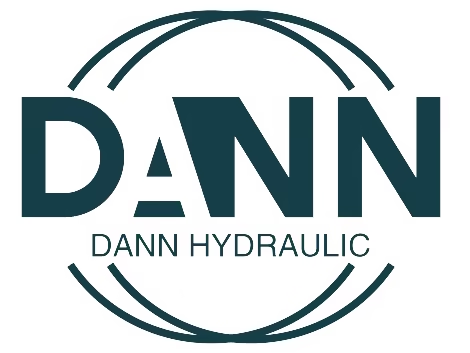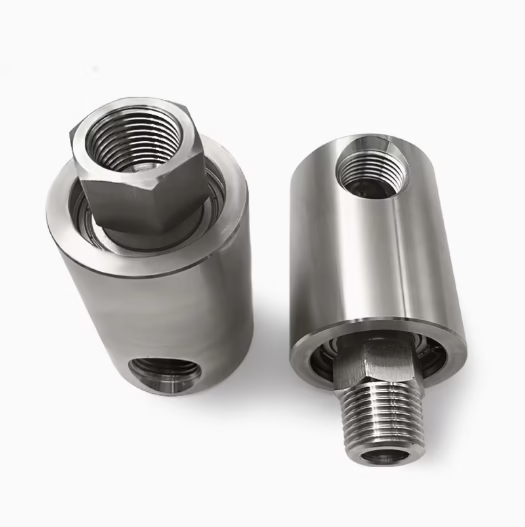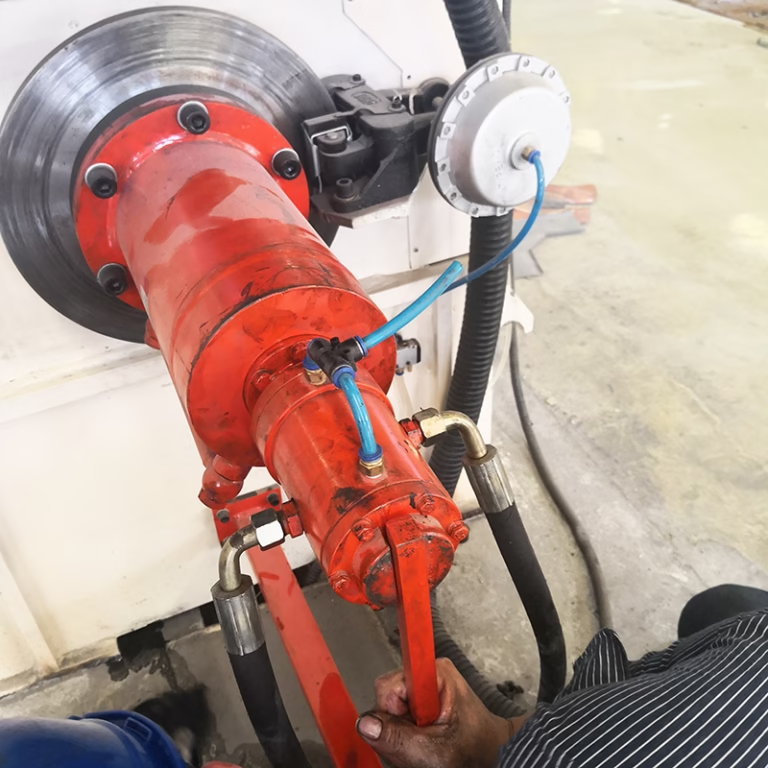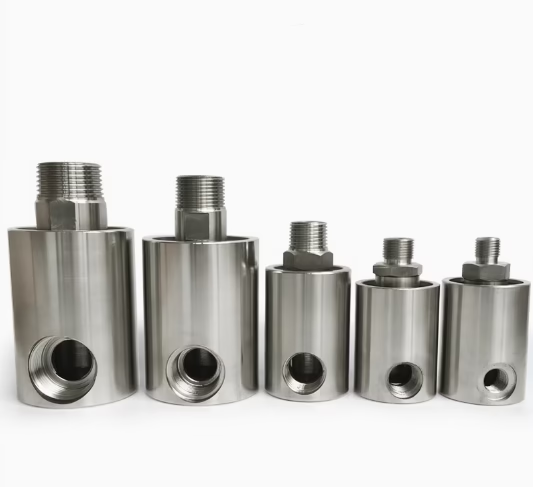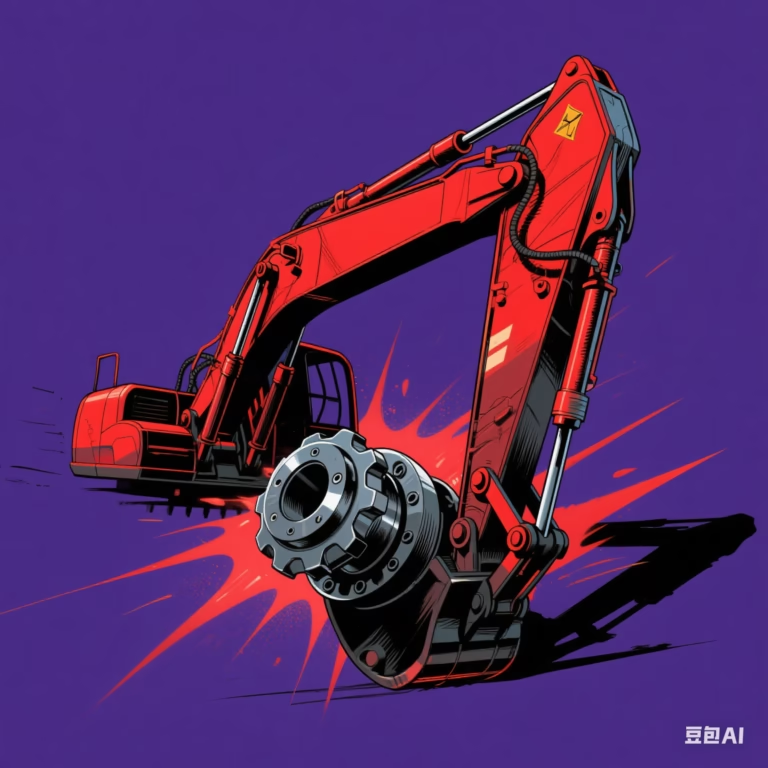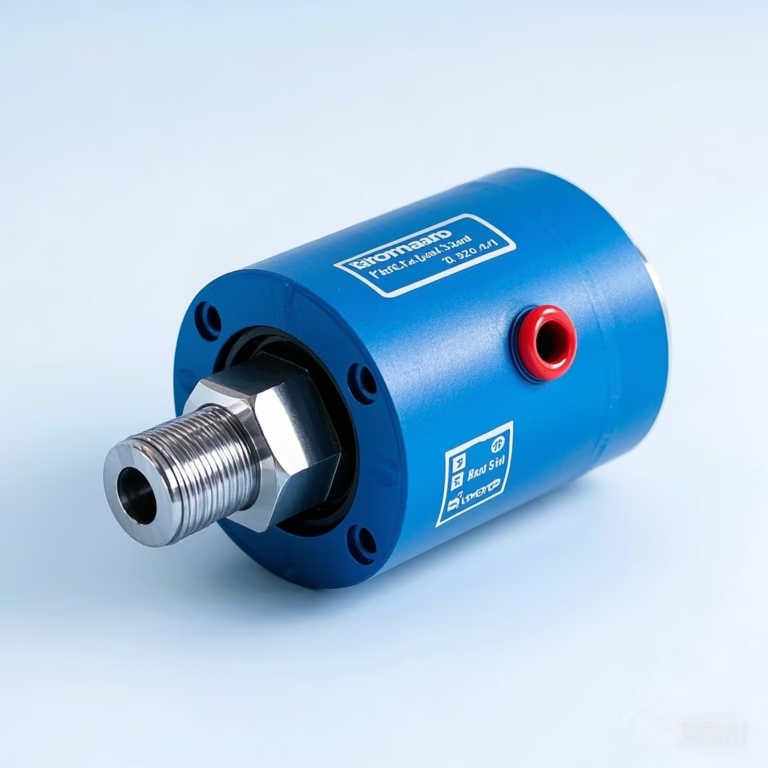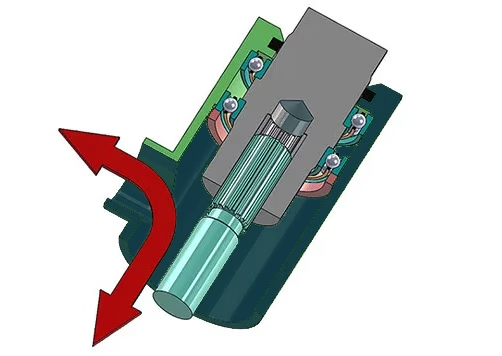90 Degree Rotary Union for high pressure and low speed
Introduction
In the intricate world of industrial machinery, where precision and durability are paramount, the 90-degree rotary unions designed for high-pressure and low-speed operations stands as a crucial component. Whether you’re in the oil and gas, manufacturing, or heavy equipment industry, understanding this specialized rotary union can make a significant difference in the efficiency and longevity of your operations. This in-depth blog post will cover everything from its unique features and applications to how you can source the right one for your specific needs.
Unveiling the Features of 90-degree High-Pressure, Low-Speed Rotary Unions
The 90-degree configuration of these rotary unions offers a distinct advantage in terms of space utilization and fluid routing. Unlike traditional straight rotary unions, the 90-degree design allows for a more compact and flexible setup, enabling easier integration into complex machinery layouts. This is particularly beneficial in environments where space is at a premium, such as in offshore oil rigs or compact manufacturing equipment.
When it comes to high-pressure capabilities, these rotary unions are engineered to withstand extreme forces. They typically feature robust construction materials, such as high-grade stainless steel or alloy steel, which can endure pressures ranging from several hundred to several thousand pounds per square inch (psi). Specialized sealing mechanisms play a crucial role here. High-pressure seals, often made from materials like fluorocarbon rubber or polyurethane, ensure a tight fit, preventing leaks even under intense pressure. These seals are designed with precise tolerances and undergo rigorous testing to guarantee their reliability.
In low-speed applications, the focus shifts to minimizing wear and tear while maintaining efficient fluid transfer. 90-degree rotary unions for low speed are built with bearings that can handle slow rotational speeds without overheating or excessive friction. Precision-machined surfaces reduce resistance, allowing the union to operate smoothly over long periods. Additionally, the internal passages are optimized to ensure a consistent flow of fluids, whether it’s hydraulic oil, coolant, or other media, even at low speeds.
Key Applications of 90-degree High-Pressure, Low-Speed Rotary Unions
Oil and Gas Industry
In the oil and gas sector, high pressure is the norm, especially during drilling and extraction processes. 90-degree rotary unions find extensive use in drilling rigs. They facilitate the transfer of high-pressure drilling fluids from stationary supply lines to the rotating drill bit. The ability to withstand extreme pressures while maintaining a leak-free seal is vital, as any leakage could lead to costly downtime, environmental hazards, and safety risks. These rotary unions also play a role in hydraulic systems that power various components on the rig, ensuring smooth operation of equipment like mud pumps and top drives.
Manufacturing and Metalworking
Manufacturing plants, particularly those involved in metalworking, rely on high-pressure coolant systems to keep cutting tools cool and lubricated. 90-degree rotary unions enable the efficient delivery of coolant to the cutting area, even in complex machine setups with limited space. In processes such as stamping and forging, where hydraulic presses operate at high pressures, these rotary unions connect the stationary hydraulic power units to the moving parts of the presses, ensuring a continuous supply of hydraulic fluid for precise and powerful operations.
Heavy Equipment
Construction and mining equipment often operates under harsh conditions and requires components that can handle high pressure and low rotational speeds. 90-degree rotary unions are integrated into the hydraulic systems of excavators, loaders, and dump trucks. For example, in an excavator’s arm, these unions allow the hydraulic fluid to flow smoothly between the stationary body and the rotating joints of the arm, enabling powerful and controlled movements for digging and lifting heavy loads.
Case Study:
A food-grade manufacturer replaced their standard unions with 90-degree models in a low-speed chocolate mixing tank. The result? A 40% reduction in seal replacements and zero contamination incidents over 18 months.
Selecting the Right 90 Degree High-Pressure, Low-Speed Rotary Union
Consider Fluid Type and Properties
The first step in choosing the appropriate rotary union is to consider the fluid it will handle. Different fluids have varying chemical compositions, viscosities, and temperatures, all of which impact the union’s performance. For instance, if you’re dealing with corrosive fluids, you’ll need a rotary union with corrosion-resistant materials, such as stainless steel or Hastelloy. High-viscosity fluids may require larger internal passages and more robust seals to ensure proper flow. Additionally, understanding the fluid’s operating temperature range is crucial, as some seals and materials may degrade or lose their effectiveness at high or low temperatures.
Evaluate Pressure and Speed Requirements
Accurately assessing the pressure and speed requirements of your application is essential. Determine the maximum pressure the rotary union will encounter during operation. It’s advisable to choose a union with a pressure rating that exceeds your expected operating pressure by a margin to account for any sudden spikes or surges. Regarding speed, measure the rotational speed of the equipment where the union will be installed. Ensure that the selected rotary union is designed to operate efficiently within that speed range, as using a union not suitable for low speed can lead to premature wear and reduced performance.
Look at Connection Types and Sizes
The connection types and sizes of the rotary union must match your existing equipment and piping system. Common connection types include threaded, flanged, and quick-connect fittings. Threaded connections are popular for their ease of installation and relatively low cost, but they may not be suitable for extremely high-pressure applications. Flanged connections offer a more secure and leak-proof option for high-pressure systems but require more space and can be more complex to install. Quick-connect fittings provide convenience and fast assembly, making them ideal for applications where frequent disconnection and reconnection are necessary. Select the connection type and size that best fit your setup to ensure a seamless integration.
Check for Quality and Certifications
Opt for rotary unions from reputable manufacturers who adhere to strict quality control standards. Look for certifications such as ISO 9001, which indicates that the manufacturer has a comprehensive quality management system in place. Certifications specific to the industry, like API (American Petroleum Institute) certifications for use in the oil and gas sector, can also assure the product’s reliability and compliance with industry standards. Reading customer reviews and testimonials can give you insights into the real-world performance and durability of the rotary union.
Sourcing 90 Degree High Pressure, Low-Speed Rotary Unions
Researching Suppliers
Start your search for suppliers by leveraging online resources. Industrial directories, such as Thomasnet and Alibaba, list numerous manufacturers and suppliers of rotary unions. These platforms allow you to browse product catalogs, compare prices, and read customer reviews. You can also use search engines to find specialized suppliers who focus on high-pressure and low-speed rotary unions. In addition to online research, consider attending industry trade shows and exhibitions. These events provide an opportunity to meet suppliers in person, see their products up close, and have in-depth discussions about your specific requirements.
Requesting Quotes and Samples
Once you’ve identified potential suppliers, reach out to them and request detailed quotes. Provide clear specifications of your requirements, including the fluid type, pressure and speed ratings, connection type, and any other special features you need. Along with the quote, ask for samples if possible. Testing the sample in your actual operating environment can help you evaluate the rotary union’s performance, durability, and compatibility with your equipment. This hands-on experience is invaluable in ensuring that you choose the right product for your needs.
Negotiating and Placing the Order
After receiving quotes and testing samples, compare the offers from different suppliers. Don’t solely focus on the price; consider factors like product quality, delivery time, and after-sales service. Negotiate with the supplier to get the best possible terms, such as a better price for a larger order quantity or a shorter lead time. Once you’ve decided on a supplier, finalize the order details, including the delivery address, payment terms, and expected delivery date. Make sure to get all the agreements in writing to avoid any misunderstandings later.
Installation and Maintenance of 90 Degree Rotary Unions
Installation Best Practices
Proper installation is crucial for the optimal performance of the rotary union. Follow the manufacturer’s installation instructions carefully. Ensure that the mating surfaces are clean and free of debris before connecting the union to the piping or equipment. Use appropriate tools and torque settings when tightening connections to prevent over-tightening or under-tightening, which can lead to leaks or damage. If the rotary union requires alignment, use alignment tools to ensure that it rotates smoothly without any misalignment-induced stress.
Regular Maintenance
Implement a regular maintenance schedule to extend the lifespan of the rotary union. Check for signs of leakage, wear, or damage during routine inspections. Lubricate the bearings and seals as per the manufacturer’s recommendations to reduce friction and prevent premature wear. Monitor the operating temperature and pressure of the union to detect any abnormal changes, which could indicate an underlying issue. Replace worn-out seals and components promptly to maintain the union’s performance and prevent costly breakdowns.
Troubleshooting Common Issues
Despite proper installation and maintenance, rotary unions may encounter problems. If you notice a leak, first identify the source. It could be due to a damaged seal, loose connection, or worn-out internal components. Tighten the connections if they are loose, and replace the seal if it’s damaged. If the rotary union is experiencing excessive vibration or noise, it may be a sign of misalignment or bearing failure. Check the alignment and replace the bearings if necessary. In case of reduced fluid flow, inspect the internal passages for blockages and clean them if required.
FAQs About 90-Degree Rotary Unions for High-Pressure, Low-Speed Applications
Q1: What industries benefit most from 90-degree rotary unions?
A: Industries like hydraulic press manufacturing, chemical processing, marine engineering, and aerospace testing rely heavily on these unions. Their compact design excels in tight spaces, while high-pressure resistance suits demanding environments such as metal forming or corrosive media handling.
Q2: How do I choose between stainless steel and engineered plastic materials?
A: Opt for 316 stainless steel if your system involves corrosive fluids or high temperatures. For food-grade or lightweight needs, engineered plastics like PEEK offer non-conductive and chemical-resistant properties. Always match the material to the softest component in your setup to prevent galvanic corrosion.
Q3: What’s the recommended maintenance schedule?
A: Daily: Check for leaks and unusual noise. Weekly: Measure vibration levels. Monthly: Inspect seals for cracks. Replace seals if fluid contamination exceeds 0.1% or operating temperatures rise by 10°F without load changes. Stock spare seals in batches of three for cost efficiency.
Q4: Why does my union leak at low speeds?
A: Low RPMs reduce hydrodynamic lubrication, increasing friction. Solutions include upgrading to PTFE composite seals with elastomer backings, ensuring proper alignment (misalignment >0.005 inches causes failure), and running a 2-hour break-in period at 25% capacity to seat seals correctly.
Q5: How do 90-degree unions differ from standard models?
A: Unlike straight-through designs, 90-degree unions save space and reduce hose stress. They’re optimized for low-speed (typically <50 RPM) high-pressure systems, using reinforced seals and balanced mechanical designs to handle pressures over 5,000 PSI without compromising flow efficiency.
The Future of Rotary Unions
Smart Unions with IoT Integration
Imagine unions that self-diagnose issues. Emerging models feature:
Embedded Sensors: Monitor pressure, temperature, and vibration in real-time.
Predictive Maintenance Alerts: Notify teams via cloud platforms when seals degrade.
Self-Adjusting Seals: Hydraulic mechanisms compensate for wear automatically.
Sustainability Focus
Eco-friendly designs reduce fluid waste. For example, double-lip seals cut leakage by 90% compared to traditional models.
Conclusion
The 90-degree rotary union, designed for high-pressure and low-speed operations, is a vital component in many industrial applications. By understanding its features, applications, and the process of selecting, sourcing, installing, and maintaining it, you can ensure seamless operations and maximize the efficiency of your machinery. Whether you’re upgrading existing equipment or setting up a new production line, making an informed decision about the right 90-degree rotary union will pay off in the long run. Don’t hesitate to reach out to experts and suppliers for further guidance and support to meet your specific industrial needs.
